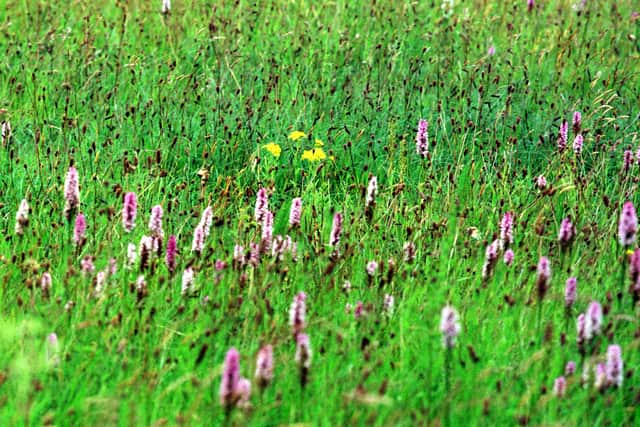Edinburgh council to reduce grass-cutting in 'wildlife-friendly' initiative
and live on Freeview channel 276
Edinburgh council is to cut back on grass-cutting in parts of the city under a new biodiversity pilot scheme
The frequency of mowing will be reduced in a “small number” of parks, green spaces and roadsides in a “more ecological and wildlife-friendly approach” to grounds maintenance. The initiative will also see more wild flowers and pollinator-friendly plants planted in grassy spots, as well as “greater use of perennial plantings and insect encouraging plants within flower and shrub areas”.
Advertisement
Hide AdAdvertisement
Hide AdCouncillors welcomed the idea at a meeting of the culture and communities committee on Thursday. A report said routine mowing has a “negative effect on wildlife, eliminating habitats, reducing the number of pollinators and reducing biodiversity”.


Dubbed ‘Edinburgh’s Flowering Lawns’ the project will seek to “encourage a more diverse mix of grass species which in turn supports a wider range of animals and insects,” it added. It is not yet known which sites will be included in the pilot.
At the meeting, Lib Dem councillor Ed Thornley said similar schemes in the past had been interpreted by some people as the council “giving up maintaining an area rather than taking a different approach”. Officials said in response that there would be “more engagement” with residents and community groups to spread awareness about the changes.
Less frequent grass cutting will be considered “on a site by site basis” taking account of health and safety considerations, particularly maintaining sight lines at junctions and roundabouts, the council said.
Advertisement
Hide AdAdvertisement
Hide Ad“In 2024, it is proposed to pilot this approach in a small number of sites. This will allow development of the concept, and will help to identify what works and what doesn’t,” the report added.
“It will also allow time for machinery to be updated, for staff training and for communication on the changes. There will also be a focus on improving the accuracy of the data held and to development of mapping tools to help with planning and future development
“In addition to reducing mowing frequencies, features to improve biodiversity will also be introduced. This will include greater use of wild folders in grass areas (e.g. use of clover, yellow rattle, common knapweed, must mallow) and increasing the use of pollinator-friendly plants (e.g. field scabious, teasel, meadow cranesbill, cowslip and meadow buttercup) and greater use of perennial plantings and insect encouraging plans within flower and shrub areas.”
The outcome of the pilot is due to be reported back to councillors in "autumn/winter".
Comment Guidelines
National World encourages reader discussion on our stories. User feedback, insights and back-and-forth exchanges add a rich layer of context to reporting. Please review our Community Guidelines before commenting.